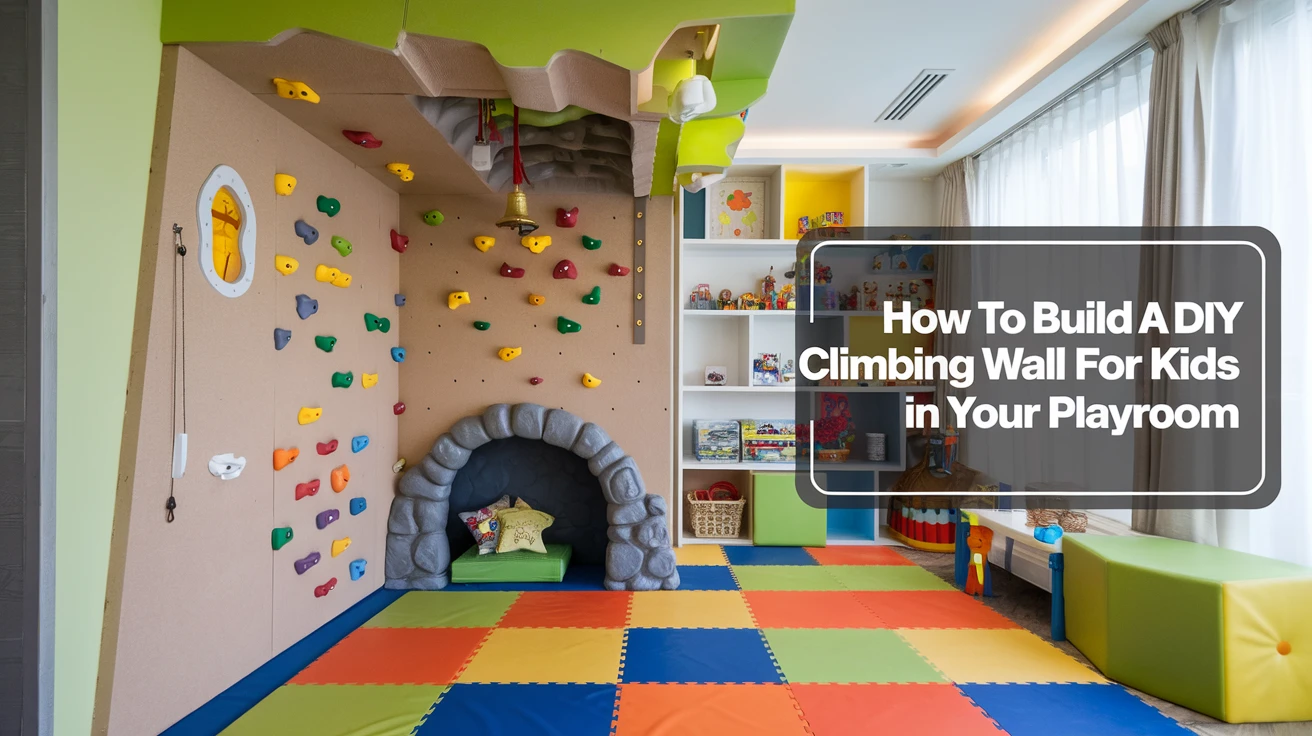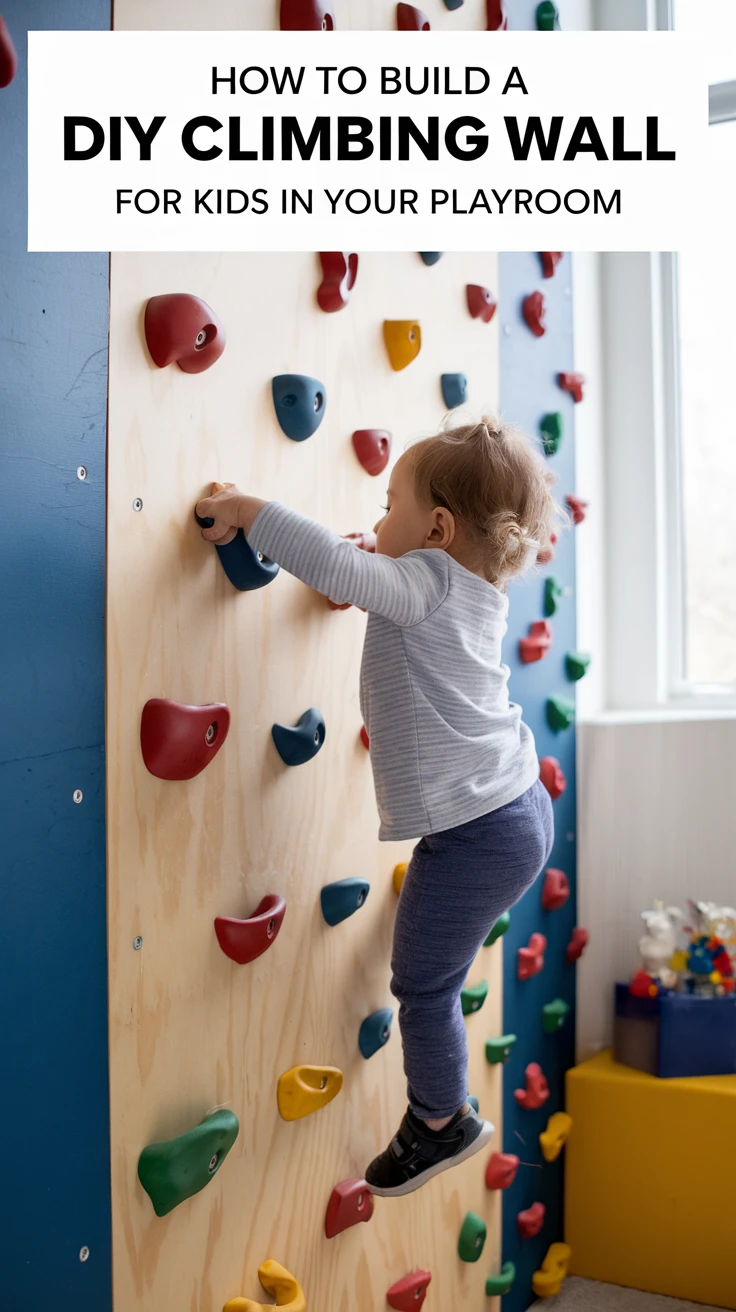
Introduction: Why Build a DIY Climbing Wall for Kids?
Imagine a rainy afternoon with kids bouncing off the walls, literally. Now imagine channeling that energy into a fun, safe, and engaging activity right in your playroom. A DIY climbing wall for kids can be the perfect solution. It not only gives them a great outlet for their energy but also helps develop their motor skills, strength, and confidence. Plus, it’s a fantastic way to bring the outdoors in, especially if you’re an avid climber yourself.
Creating this climbing adventure at home isn’t as daunting as it sounds, and it can be a rewarding project for both you and your little ones. In this guide, we’ll walk you through the steps, share some personal insights, and help you avoid common pitfalls I encountered during my own journey building a climbing wall for my kids.
Planning Your DIY Climbing Wall
Choosing the Right Location
Before you start drilling holes into walls, it’s crucial to pick the perfect spot for your climbing wall. Ideally, you’ll want a space in your playroom that’s free from obstructions and has enough height to offer a challenge without being unsafe. I made the mistake of initially choosing a spot next to a window—bad idea! Kids climb fast and high, so safety first!
Determining the Wall Size
Your wall doesn’t need to be enormous to be effective. A wall as small as 8 feet wide and 6 feet high can provide a good climbing experience for younger children. Use the table below to determine the appropriate size based on your available space and your child’s age.
| Age Group | Suggested Wall Size |
|---|---|
| 3-5 years | 6 x 6 feet |
| 6-8 years | 8 x 8 feet |
| 9-12 years | 10 x 10 feet |
Materials and Tools You’ll Need
Essential Materials
- Plywood sheets (3/4 inch thick)
- Climbing holds
- T-nuts
- Wood screws
- Wooden studs
- Paint or sealer
Tools Required
Having the right tools makes the process smoother. You’ll need:
- Drill
- Wrench
- Saw (circular or hand saw)
- Measuring tape
- Level
- Screwdriver
Step-by-Step Guide to Building Your Climbing Wall
1. Frame the Wall
Start by constructing a solid frame using the wooden studs. Secure them to the playroom wall with wood screws, ensuring everything is level. I learned the hard way that even a slight tilt can lead to wobbly holds and an uneven climb.
2. Cut and Prepare the Plywood
Cut the plywood to fit your desired wall size. Sand the edges to prevent any splinters, and coat the wood with a durable paint or sealer. This not only adds a pop of color but also protects the wood from moisture and wear.
3. Install the T-nuts
Drill holes in a grid pattern across the plywood and hammer T-nuts into the back. This setup allows you to change the location of climbing holds easily—a feature that keeps the wall interesting as your kids grow and improve.
4. Attach the Plywood to the Frame
Secure the prepared plywood sheets to the frame, checking again for levelness. I remember the excitement my kids had when they saw the wall coming together—it was all worth it!
5. Mount the Climbing Holds
Using a wrench and screwdriver, attach the climbing holds to the T-nuts. Mix things up by arranging the holds in various patterns; start with easier routes and gradually introduce more challenging ones.
Safety Considerations
Padding and Safety Mats
No climbing wall is complete without proper padding. Lay down thick safety mats or install wall padding to cushion any falls. It’s a non-negotiable safety measure that I realized was essential after a few close calls with my young climbers.
Regular Maintenance
Check the climbing holds and wall structure regularly. Tighten any loose holds and inspect the plywood for wear and tear. This proactive maintenance keeps the climbing experience safe and enjoyable.
Incorporating Fun Features
Add Creative Elements
Why stop at a plain wall? Add features like a mini rock cave or climbing ropes to enhance the adventure. My kids love the small bell at the top of our wall—it gives them a sense of achievement when they ring it after reaching the top.
Interactive Challenges
- Time Challenges: Use a stopwatch to encourage faster climbs.
- Color Coding: Assign colors to different difficulty levels.
- Obstacle Paths: Create routes with specific rules to follow.
Conclusion
Building a DIY climbing wall for kids in your playroom is a project that offers endless fun and developmental benefits. With careful planning and attention to safety, you can create a climbing wall that’s both challenging and rewarding. Remember, the journey is just as important as the destination—enjoy the process and the precious moments you’ll share with your children as they conquer new heights.
Key Takeaways
- Choose a safe, spacious location for your climbing wall.
- Use quality materials and tools for durability.
- Incorporate fun features to keep the wall engaging.
- Regular maintenance is crucial for safety.
FAQ
1. How much does it cost to build a climbing wall?
The cost can vary greatly depending on the size of the wall and the materials used. On average, a small home climbing wall might cost between $200 and $500.
2. What age is appropriate for a climbing wall?
Children as young as three can start using a simple climbing wall, but always ensure it’s designed with their safety in mind.
3. How do I ensure my climbing wall is safe?
Regularly check and maintain the structure, use adequate padding, and supervise young climbers at all times.
4. Can I move my climbing wall if needed?
While it’s possible, it can be a complex task. It’s best to choose a permanent location.
5. What type of climbing holds should I use?
Choose climbing holds that are age-appropriate and varied in shape to offer different challenges.
6. Is it better to paint or seal the plywood?
Both painting and sealing protect the wood, but sealing typically provides better moisture protection.
7. Can I build a climbing wall outdoors?
Yes, but you’ll need weather-resistant materials and additional safety considerations.
8. How often should I rearrange the climbing holds?
To keep the wall challenging, consider rearranging the holds every few months.
9. Do I need a professional to build the climbing wall?
While professional help can ensure safety, many DIY enthusiasts successfully build walls themselves with careful planning.
10. How can I make climbing more engaging for my kids?
Incorporate games, challenges, and rewards to keep their interest high and their skills growing.
